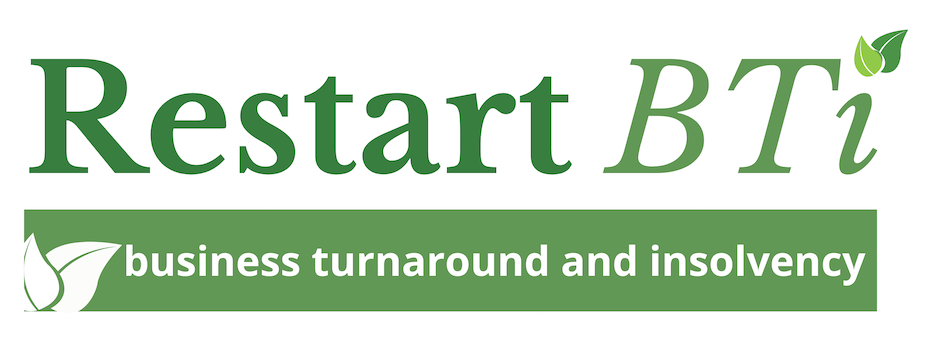Top Service News
Warning signs for Creditors
Published on
To a business recovery and insolvency expert it may be obvious that a company is heading towards financial difficulty or even insolvency proceedings. A creditor however may not see the warning signs when a business owner is “putting their head in the sand” and avoiding the reality of the situation.
Insolvency is not an instant or immediate state. It can take weeks, months or even years for a faltering business to get to the point that it is insolvent.
The two basic methods of assessing whether a company is insolvent are as follows:
Cash Flow Test
Is the business able to pay its debts as and when they fall due or in the reasonably near future?
Highlighted below are some of the typical indicators we come across prior to a business failing. These on their own may not indicate a failing company but in conjunction with each other may indicate issues.
If a customer is displaying some of the following behaviours it may be worth probing deeper before extending further credit. Remember that emotions cannot play any part in making that decision.
- Has the customer exceeded their agreed credit terms?
- Have requests for an extension or renegotiation on prices been made?
- Have there been several broken promises of payment?
- Are they making unnecessary invoice disputes to delay matters?
- Are they unable to produce up to date financial information when undertaking credit reviews?
- Are regular reviews of external credit reports undertaken to monitor for detrimental data?
- Are they subject to any pending legal action e.g., CCJ or winding up petition?
- Is the customer ignoring your correspondence and calls?
- Have you had to repeatedly place your customer on stop?
- Has their credit rating been reduced?
- Have they tried to seek credit terms with alternative suppliers?
- Do they have repayment plans with other creditors?
- Do they have a Time to Pay Arrangement with HM Revenue & Customs?
- Has the business lost a key customer that it has not or is unable to replace?
- Is there an alternative competitor in the market that could potentially reduce their market share?
- Does the customer only have a small number of key clients and how are these performing, have they been subject to a bad debt or insolvency?
- Are they using invoice financing or other funding more frequently?
- Have they sold or refinanced assets?
- Are you able to obtain trade credit insurance for the customer?
- Is the customer laying off staff or making redundancies?
Balance Sheet Test
Are the company assets less than its liabilities? It is not unusual for a company to have net liabilities so this should be considered alongside the cash flow test.
As a credit manager it is sometimes difficult to form a view on the publicly available information given that it is historic and does not necessarily reflect the current financial position. This is where an industry specific credit information provider comes into play. This type of credit information provider can provide data gathered from other traders in your industry. This information will build a picture of how the customer is paying other trade suppliers at the current time.
- Has the company continually required the use of an overdraft?
- Has it submitted its statutory accounts on time?
- Do you have open conversations with your customer? Are they indicating any financial issues within the company? Is there a high turnover of staff? Are there problems with the landlord?
- How old are the directors? Is any succession planning evident?
- Have long standing directors suddenly resigned?
- Has the business moved to smaller premises?
- Is the company showing reduced profit margins? It is far too easy to be misled by thinking high turnover leads to bigger profits. If overheads are also growing at an exponential rate, the profitability could in fact be reduced. An often-used quote in the insolvency profession is “turnover is vanity, profit is sanity.”
Legal
A further test to consider is whether your customer is subject to any pending legal action.
If the customer is subject to a statutory demand or a County Court Judgement, these are precedents that a creditor could use to follow up with a Winding up Petition after which your customer could be forcibly liquidated. Legal action may be taken as a strong warning signal of pending insolvency if the matter cannot be resolved.
Trading History
With creditors only being able to issue a winding up petition in certain circumstances during the pandemic, it is more important than ever to closely monitor your customers performance and ensure that you have a robust credit and collection policy.
Top Service is a key stakeholder in your business credit management function. Our credit reports include everything you need to know before extending further credit.
Where you might be struggling to collect on your outstanding invoices the effective collections service offered by Top Service is based on a combination of skilled collectors with a pro-active approach to collections, to help your overdue invoice become your customer’s priority for payment.
We along with our trusted partners can offer you support and advice on all credit management matters.
Contact our helpdesk team today on 01527 518800 to discuss how Top Service can support and help you protect your business.
 This article is produced in collaboration with Paul Hughes Director for Restart BTi Licensed Insolvency Practitioners
This article is produced in collaboration with Paul Hughes Director for Restart BTi Licensed Insolvency Practitioners
